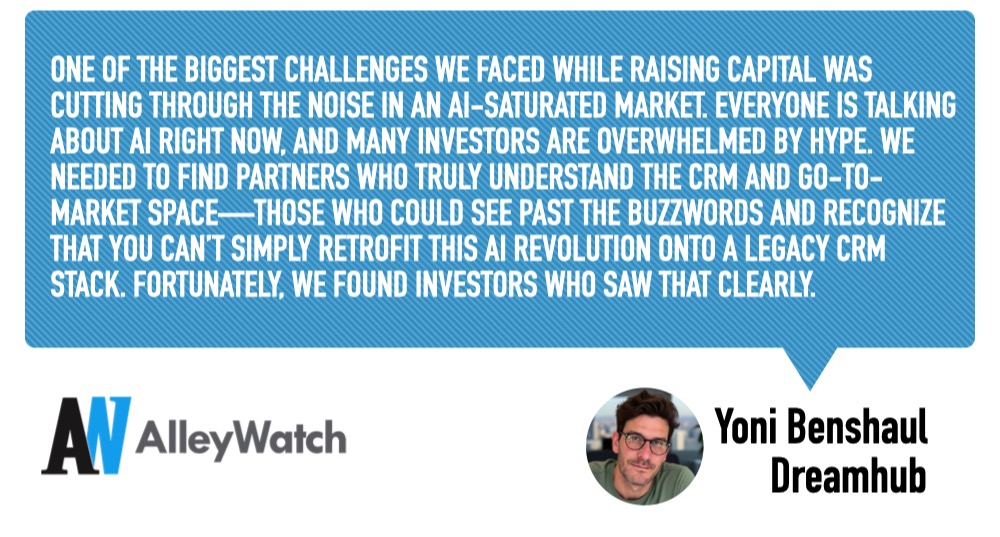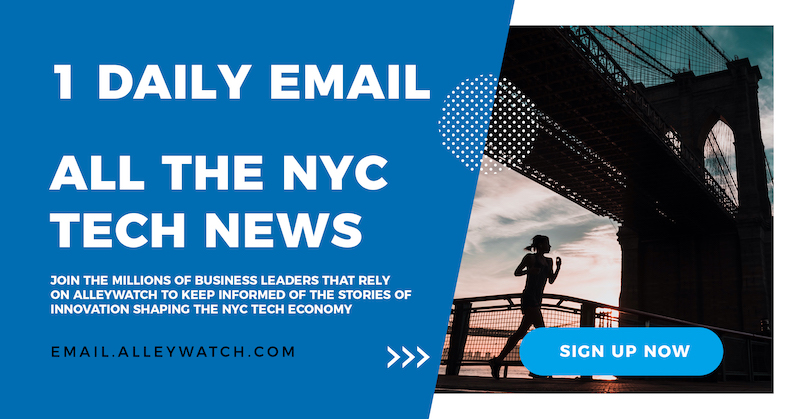The $10B CRM market has remained largely stagnant for nearly two decades, with B2B SaaS companies forced to rely on bloated, outdated systems that create more problems than they solve. Sales teams spend fortunes on CRM stacks averaging 12+ applications, yet still struggle with manual data entry, inaccurate forecasting, and clunky monitoring systems that their account executives resent and managers can’t trust. Dreamhub has built the world’s first AI-native CRM exclusively for B2B SaaS, combining advanced machine learning with fine-tuned large language models to create a platform that updates itself, executes workflows autonomously, and delivers predictive insights. Unlike legacy systems that retrofit AI onto outdated architecture, Dreamhub learns from real sales motion, interprets data across every touchpoint, and continuously improves forecasting accuracy by benchmarking against similar companies. Early customers like Findmine report replacing three platforms with Dreamhub, calling the ROI “100x worth it.”
AlleyWatch sat down with CEO and Co-founder Yoni Benshaul to learn more about the business, the funding process, and his experience building this next-generation CRM after previously serving as Gap Inc.’s Chief Analytics Officer.
Who were your investors and how much did you raise?
$7M Seed/Preseed from Jibe, Dig , LocalGlobe, Adam Blitzer, COO Datadog and ex EVP in Salesforce, Ran Sarig, CEO and Founder of Datorama and other angels.
Tell us about the product or service that Dreamhub offers.
Dreamhub is the only AI-native CRM purpose-built for B2B SaaS companies, offering a fundamentally new approach to sales operations. Instead of relying on manual data entry and retrofitting AI into outdated systems, Dreamhub automates data capture and workflow execution from end to end. Its AI models are trained specifically on SaaS sales data, delivering deep, contextual insights that help teams forecast accurately, identify risks early, and improve execution without additional overhead. The result is a system that stays up to date on its own, surfaces what matters most, and allows sellers and managers to focus on action—not administration.
What inspired the start of Dreamhub?
 I previously led CB4, a platform that uses AI algorithms to optimize retail operations and enhance customer online and offline experience. We scaled the company by earning the trust of major brands like Gap, Target, Aldi, Levi’s, and others. Eventually, Gap Inc. acquired the CB4, and I joined as their Chief Analytics Officer. But the frustration I experienced while scaling that business never left me. As a team of data geeks, we had high expectations for our CRM—we believed it could help us truly understand our customers, optimize sales cycles, and drive conversions. Instead, after seven years and significant investment, we were left with a clunky monitoring system that our AEs resented and we couldn’t trust. Knowing how far AI has come, I was convinced the CRM experience could—and should—be completely reimagined. But doing so meant starting from scratch: building an AI-native platform, designed specifically for the needs of B2B SaaS. So that’s what we did.
I previously led CB4, a platform that uses AI algorithms to optimize retail operations and enhance customer online and offline experience. We scaled the company by earning the trust of major brands like Gap, Target, Aldi, Levi’s, and others. Eventually, Gap Inc. acquired the CB4, and I joined as their Chief Analytics Officer. But the frustration I experienced while scaling that business never left me. As a team of data geeks, we had high expectations for our CRM—we believed it could help us truly understand our customers, optimize sales cycles, and drive conversions. Instead, after seven years and significant investment, we were left with a clunky monitoring system that our AEs resented and we couldn’t trust. Knowing how far AI has come, I was convinced the CRM experience could—and should—be completely reimagined. But doing so meant starting from scratch: building an AI-native platform, designed specifically for the needs of B2B SaaS. So that’s what we did.
How is Dreamhub different?
Dreamhub is the only AI-native CRM built specifically for B2B SaaS. By designing it vertically and with a modern AI-native architecture from the ground up—instead of retrofitting a generic platform—we’re able to integrate large language models (LLMs) and machine learning in a uniquely powerful way that no horizontal, legacy CRM can match. This combination allows Dreamhub to do what no other CRM can: think, learn, self-update, and deliver deep, actionable AI insights that continuously elevate go-to-market performance.
What market does Dreamhub target and how big is it?
B2B SaaS Companies. Market size is over $10B.
What’s your business model?
Subscription- SaaS.
How are you preparing for a potential economic slowdown?
We offer a single, streamlined GTM solution that’s light years ahead of today’s expensive and bloated CRM stacks. Dreamhub delivers significantly lower total cost of ownership—just a fraction of traditional systems—while actually helping B2B SaaS teams close more deals, operate more efficiently, and improve overall profitability.
What was the funding process like?
Some of our investors knew me from my previous company, while others were already deeply familiar with the GTM and CRM space. Ross Mason, founder of MuleSoft—which was acquired by Salesforce for $6.5B and who recently raised a $100M seed fund at Dig—immediately recognized the transformative potential of Dreamhub. The same was true for Adam Blitzer, cofounder of Pardot, and Ran Sarig, CEO and cofounder of Datorama. All three have built highly successful GTM platforms that were ultimately acquired by Salesforce, and they each saw in Dreamhub a clear next-generation leap in how go-to-market teams operate.
What was the biggest challenge you faced while raising capital?
One of the biggest challenges we faced while raising capital was cutting through the noise in an AI-saturated market. Everyone is talking about AI right now, and many investors are overwhelmed by hype. We needed to find partners who truly understand the CRM and go-to-market space—those who could see past the buzzwords and recognize that you can’t simply retrofit this AI revolution onto a legacy CRM stack. Fortunately, we found investors who saw that clearly. Another challenge was refining our pitch. It took time to articulate why Dreamhub’s AI-native, vertically integrated approach isn’t just different—it’s fundamentally better. Once we nailed that, the conversations shifted meaningfully.

What factors about your business led your investors to write the check?
I think what resonated most with our investors was their deep familiarity with the CRM market—and how outdated and broken it has become. They understood that fixing it requires more than just incremental improvements; it demands someone who truly understands both AI and go-to-market dynamics. I’ve been fortunate to have that dual experience—leading GTM teams on one hand, and managing both small and large Data Science teams on the other. I believe they saw that combination as a real differentiator, and a reason why I could approach this problem in a way others couldn’t.
What are the milestones you plan to achieve in the next six months?
We are focused on boarding new customers and ensuring their experience is successful and that we deliver on the Dreamhub promise.
What advice can you offer companies in New York that do not have a fresh injection of capital in the bank?
Focus on ruthless prioritization and customer-led execution. In times when capital is tight, clarity becomes a superpower. double down on what delivers real value, cut what doesn’t, and stay close to your customers. Constraints can be a forcing function for sharper thinking and better products.
Where do you see the company going now over the near term?
Our goal is to onboard about 100 new customers in the next 6 months.
What’s your favorite spring destination in and around the city?
West Village. The West Village feels like a slower, softer side of New York. Tree-lined streets, cozy cafés, and a quiet charm that’s easy to fall for.









